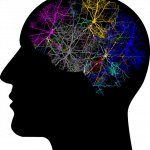If you are looking for ways to improve your life and achieve your goals, then you have come to the right place.
In this article, I will be sharing with you some powerful NLP techniques that can help you overcome limiting beliefs, negative emotions, and other barriers that prevent you from living your best life.
I have seen firsthand how these techniques can change people’s lives in profound ways.
Whether it’s overcoming anxiety or depression, improving relationships, or achieving career success, NLP offers a wide range of tools and strategies that can help you unleash your full potential.
So if you’re ready to take control of your life and start experiencing more joy, fulfillment and abundance than ever before, then read on and discover the power of NLP for personal transformation.
Identifying Limiting Beliefs
 One of the key areas I focus on is identifying limiting beliefs. These are negative thoughts or convictions that hold us back from achieving our goals and realizing our full potential. They can be deeply ingrained in our subconscious mind and may have been formed as a result of past experiences or conditioning.
One of the key areas I focus on is identifying limiting beliefs. These are negative thoughts or convictions that hold us back from achieving our goals and realizing our full potential. They can be deeply ingrained in our subconscious mind and may have been formed as a result of past experiences or conditioning.
Rewriting limiting beliefs is crucial for personal growth and development. By changing the negative self-talk that we engage in, we can overcome self-sabotage and create positive change in our lives.
This process involves recognizing when these beliefs arise, understanding where they come from, and then challenging them with evidence to the contrary. Overcoming self-sabotage requires a shift in mindset.
Rather than being held captive by limiting beliefs, we need to develop a more empowering perspective. This involves taking ownership of our thoughts and actions, setting realistic goals, and embracing the possibility of success.
With practice and persistence, we can rewire our brains to think positively about ourselves and our abilities.
Reframing Negative Thought Patterns
Changing perspectives is a key component of personal transformation. Reframing negative thought patterns can be incredibly challenging, but it’s essential for growth and progress. Cognitive restructuring is one effective way to shift your mindset towards positivity.
Firstly, identify the underlying beliefs that fuel your negative thoughts. These could stem from childhood experiences or past traumas. Once you’ve identified these beliefs, challenge them by seeking evidence to disprove them. This helps break down the power they hold over your mind.
Secondly, practice mindfulness techniques such as meditation or journaling to become more aware of your thought patterns. When a negative thought arises, try reframing it into a positive statement instead.
For example, if you catch yourself thinking ‘I’m not good enough,’ reframe it into ‘I am capable and worthy.’ Over time, this will train your brain to automatically default to positive self-talk.
Finally, seek support from a therapist or coach who specializes in cognitive behavioral therapy (CBT). They can guide you through the process of cognitive restructuring and help you develop personalized strategies for overcoming negative thought patterns.
Remember that changing your perspective takes time and effort, but with dedication and consistency, it’s possible to transform even the most deeply ingrained negative beliefs into positive ones.
Anchoring Positive Emotions
Reframing negative thought patterns is the first step towards personal transformation. By changing how we perceive our thoughts, we can alter the way they affect us. And when we start to see things differently, we begin to feel more positive and empowered.
Now that you’ve learned how to reframe your thoughts, it’s time to anchor those positive emotions. This technique involves creating associations between a specific trigger or stimulus and a particular emotional state. By repeatedly triggering this association, we can train ourselves to access these positive emotions whenever we need them.
Here are three ways you can use anchoring in your daily life:
1. Choose a physical gesture or movement that represents the emotion you want to anchor (e.g., raising your fist for confidence).
2. Identify a specific memory where you experienced that emotion intensely.
3. Combine the two by associating the physical gesture with the memory of that intense emotional experience.
By consistently reinforcing this connection through repetition, you’ll be able to tap into those positive emotions at any time.
Remember, creating new habits takes time and effort, but with practice and patience, you can transform your inner world and live a more fulfilling life.
Practicing Visualization Techniques
Visualization techniques are a powerful tool that can be used to transform one’s life in profound ways. Guided imagery is a form of visualization where an individual imagines themselves in a particular situation or environment. This technique has been shown to have numerous benefits, including reducing anxiety and stress levels, improving focus and concentration, and increasing self-confidence.
Manifestation exercises are another type of visualization technique that can help individuals achieve their goals by focusing on positive outcomes. These exercises involve creating mental images of the desired outcome while also incorporating feelings of gratitude and positivity. By doing so, individuals can begin to attract the things they want into their lives while also letting go of negative thoughts and emotions that may be holding them back.
Practicing these visualization techniques regularly can lead to significant personal transformation over time. By visualizing oneself achieving their goals or living out their dreams, individuals can start to believe in themselves more deeply and take actions towards making those visions a reality.
With dedication and consistency, anyone can harness the power of guided imagery and manifestation exercises for personal growth and fulfillment.
Setting Achievable Goals
You might be thinking, ‘I’ve tried setting goals before and failed. What’s the point in trying again?’ While it’s true that goal-setting can be difficult, with proper strategies and mindset shifts you can overcome obstacles and achieve your desired outcomes.
Here are some effective goal-setting strategies to help you on your personal transformation journey:
1. Start small: Setting achievable goals is key to building momentum towards larger ones. Begin by breaking down bigger goals into smaller action steps.
2. Write them down: Documenting your goals makes them more tangible and provides a visual reminder of what you’re striving for.
3. Celebrate progress along the way: Acknowledge each step taken towards achieving your goal, no matter how small or insignificant they may seem at first.
Overcoming obstacles is part of the process when working toward any achievement. However, we often give up too quickly when faced with setbacks or challenges. Instead of letting those obstacles defeat us, we can use them as opportunities for growth and learning.
By adopting a growth mindset and reframing our perspective on failure, we can transform these experiences into valuable lessons that propel us forward.
Remember that reaching your goals is not an overnight process, but rather a journey full of ups and downs. Don’t let temporary setbacks deter you from pursuing what truly matters to you.
With perseverance, resilience, and dedication to self-improvement, you have the power to create lasting change in your life without sacrificing who you are or compromising your values.
What Is The History Of NLP And How Did It Come To Be Used For Personal Transformation?
Origins of NLP trace back to the 1970s, when Richard Bandler and John Grinder were studying successful therapists like Virginia Satir and Milton Erickson. They observed patterns in their language and behavior that they used with patients to achieve therapeutic outcomes.
From there, they developed a model for communication called Neuro-Linguistic Programming (NLP), which has since evolved into a set of techniques for personal transformation.
Through its evolution, NLP has become widely popular as it provides individuals with tools to improve their lives through mental programming and behavioral change.
I have seen firsthand how this approach can help people overcome limiting beliefs and achieve their goals by tapping into the power of their subconscious mind.
Can NLP Techniques Be Used For Healing Past Trauma And Emotional Wounds?
I have seen firsthand the power of NLP techniques when it comes to healing past trauma and emotional wounds.
One metaphor that comes to mind is the idea of mindfulness as a tool for cleaning up your mental space. Just like how decluttering your physical environment can bring clarity and peace, practicing mindfulness through NLP techniques can help you clear out negative thought patterns and emotions that may be holding you back from true healing.
Additionally, incorporating self-compassion into these practices allows for more gentle exploration and understanding of past traumas without judgment or shame.
Through this combination of NLP techniques and mindful self-compassion, individuals can begin their journey towards true personal transformation and healing.
How Can NLP Be Integrated With Other Forms Of Therapy Or Self-Improvement Practices?
To truly maximize the benefits of NLP, it’s important to integrate it with other forms of therapy or self-improvement practices.
Mindfulness and cognitive behavioral therapy are two popular options that can complement NLP techniques quite well.
By incorporating mindfulness practices into your daily routine, you’ll be able to develop a deeper sense of awareness and presence – which will only enhance the effectiveness of NLP exercises.
Similarly, combining NLP with cognitive behavioral therapy can help you identify negative thought patterns and replace them with more positive ones.
Overall, integrating multiple approaches is key to achieving lasting personal transformation.
Are There Any Potential Risks Or Negative Side Effects Of Using NLP Techniques For Personal Transformation?
It’s important to consider the potential drawbacks and ethical considerations of any technique used for personal growth.
While NLP techniques have been proven effective in many cases, they can also pose risks if not applied properly or by an untrained practitioner.
It’s crucial to ensure that the individual is fully informed about what they’re getting into before undergoing any form of therapy or self-improvement practice, including NLP.
As with all therapies, there may be negative side effects such as anxiety or confusion; however, these are typically temporary and manageable.
With proper training and guidance from a qualified professional, using NLP techniques for personal transformation can lead to positive outcomes without any significant risk factors.
How Long Does It Typically Take To See Significant Results From Practicing NLP Techniques, And How Often Should They Be Practiced For Optimal Effectiveness?
To see significant results from practicing NLP techniques, it’s important to understand that the duration and frequency of practice will vary for each individual.
Some may experience a shift in their mindset after just a few sessions, while others may require longer periods of consistent practice.
It’s recommended to aim for daily or weekly practice, depending on your schedule and availability.
Remember that transformation is an ongoing process, so don’t be discouraged if you don’t notice immediate changes – keep at it and trust the power of repetition and consistency in creating lasting change.
I encourage my clients to prioritize self-reflection and mindfulness as they embark on this journey towards personal growth and transformation.
I have seen how powerful this technique can be in helping individuals overcome past traumas and emotional wounds. It is fascinating to note that studies have shown that NLP has a success rate of over 90% for treating conditions such as phobias and PTSD.
However, it is important to remember that while NLP techniques can produce significant results relatively quickly, they are not a quick fix solution.
Consistent practice and integration with other forms of therapy or self-improvement practices will lead to the most optimal outcomes.
As with any form of therapy or personal development tool, it is essential to work with a qualified practitioner who can guide you through the process safely and effectively.
By incorporating NLP into your life, you can discover new perspectives on old patterns and ultimately transform yourself into the best version of yourself possible.






